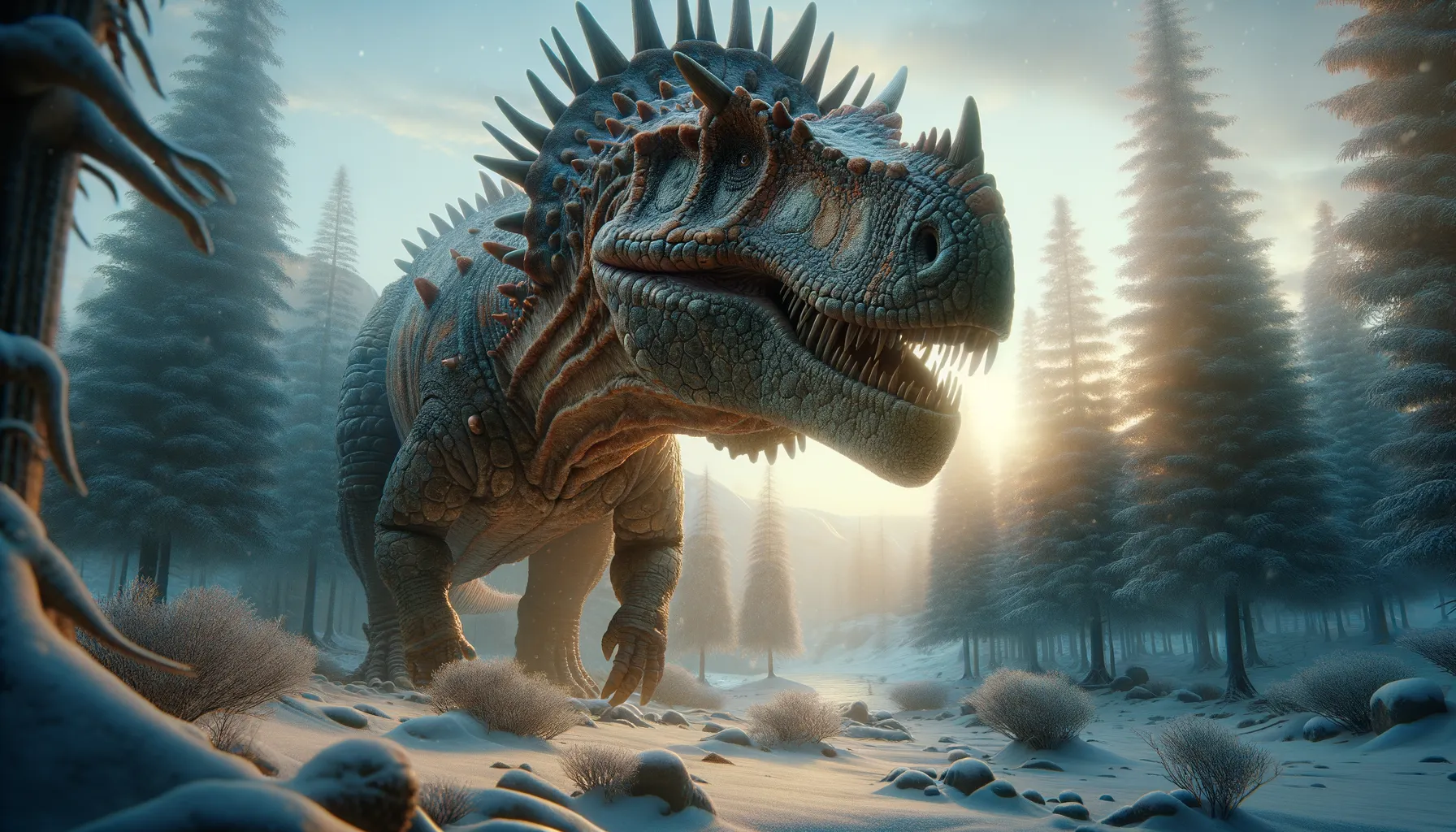
Antarctopelta
Armored pioneer of the icy Cretaceous.
Period
Cretaceous
Length
Measured about 4 meters long.
Height
Stood approximately 1.2 meters tall.
Weight
Weighed around 3,500 kilograms.
Antarctopelta was a heavily armored dinosaur that roamed the early icy landscapes of Antarctica during the Cretaceous period. As one of the first dinosaurs discovered on the continent, its discovery opened new insights into the distribution of dinosaurs in polar regions. It was known for its protective bony plates and spikes, which helped safeguard it against predators. This herbivore thrived in an environment that was likely forested, albeit cooler than typical dinosaur habitats.
Diet
Antarctopelta was a herbivore, feeding on the diverse plant life available in its environment. It likely ate low-lying vegetation, including ferns and cycads, using its beak-like mouth to strip leaves from branches.
Hunting
As a herbivore, Antarctopelta did not hunt prey. Instead, it foraged for plants and utilized its tough beak and grinding teeth effectively for feeding. It relied on its sense of smell to locate edible vegetation.
Environmental challenges
Living in the polar regions of Cretaceous Antarctica, Antarctopelta faced extreme seasonal variations, including extended periods of darkness and cooler temperatures. Despite these conditions, abundant forestation provided ample food sources throughout the year. Its strong, armored body helped resist any attacks from predators trying to exploit moments of vulnerability.
Speed
Slow-moving due to its heavy armor.
Lifespan
Estimated to be several decades long.
First discovery
Discovered in Antarctica in 1986 near James Ross Island.
Fun Facts
- Antarctopelta is one of the first dinosaurs ever discovered in Antarctica, highlighting the diverse prehistoric life that once thrived on the frozen continent.
- The name 'Antarctopelta' means 'Antarctic shield', a nod to its heavily armored body that protected it from predators.
- Antarctopelta lived during the Late Cretaceous period, about 70 million years ago, when Antarctica was not the icy wasteland we know today.
- Fossils of Antarctopelta were first uncovered on James Ross Island in 1986, buried beneath layers of ice and rock.
- This dinosaur was a plant-eater, or herbivore, and likely feasted on the lush vegetation that covered Antarctica at the time.
- Scientists believe that Antarctopelta had a club-like tail, similar to the iconic Ankylosaurus, which it could use to defend itself from attackers.
- Despite its imposing armor, Antarctopelta was relatively small, measuring about 4 meters (13 feet) long, roughly the size of a small car.
Growth and Development
Young Antarctopelta individuals likely grew rapidly to increase their chances of survival against predators. Their development involved the gradual formation of their distinctive armor plates and spikes. As they matured, their feeding techniques would have evolved, adapting to different plant availabilities and sizes.
Habitat
Antarctopelta inhabited a forested environment, where it could find protection and food among the trees. During the Cretaceous period, Antarctica was much warmer than today but still experienced colder temperatures than many dinosaur regions. The area was characterized by lush vegetation supported by a moist, temperate climate.
Interaction with other species
Antarctopelta lived alongside a variety of other prehistoric creatures, including smaller herbivorous dinosaurs and occasional carnivorous threats. Its interactions were likely limited due to its defensive nature and heavy armor. It might have shared its habitat peacefully with other plant-eating species, forming mixed-species groups for foraging and protection.
Natural lifespan
Antarctopelta likely lived for several decades in its natural environment.
Reproduction
Antarctopelta likely laid eggs in nests constructed in secure areas, possibly using its environment to help insulate and protect them. Young hatchlings, while vulnerable, were equipped with the beginnings of armor that developed as they matured. Maternal care might have included guarding nests until embryos were sufficiently developed.
Social behaviour
Antarctopelta may have exhibited some degree of social behavior, possibly forming small groups for collective security. Such arrangements would allow for more effective foraging while minimizing the risk of predator attacks. The species' social structure likely influenced how individuals scouted for new food sources and responded to threats.
Fossil locations
Antarctopelta fossils were first discovered in 1986 on James Ross Island, Antarctica, providing some of the earliest evidence of dinosaurs inhabiting polar regions. The discovery was significant for understanding the adaptability and distribution of dinosaurs globally. Fossil remains are limited, but ongoing explorations continue to uncover more clues about Antarctic dinosaurs.
